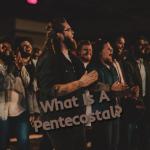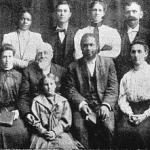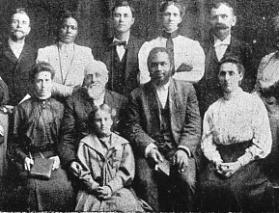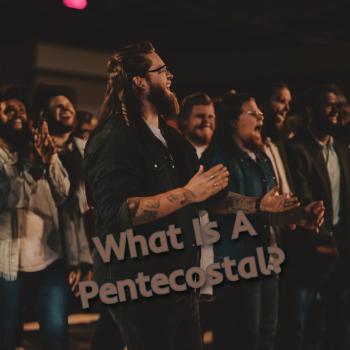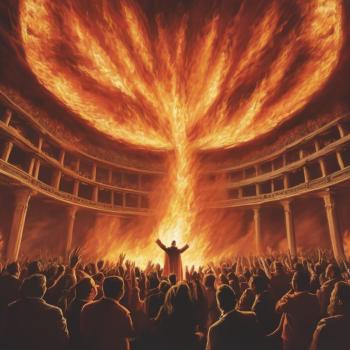Every February in the United States is designated as Black History Month. This month-long event is an intentional effort in American culture to recognize and celebrate the influence and contributions of African Americans in the shaping of our unique multi-cultural experience. The African-American contribution to the history of Pentecostalism is foundational to the movement and, perhaps, some may rightfully argue, a chief cornerstone to the successful beginning of the movement..
While most Pentecostals (and others) are familiar with William Seymour’s contribution to the movement, many are less familiar with the historical impact of April Lucy Farrow.
The Holiness Pastor
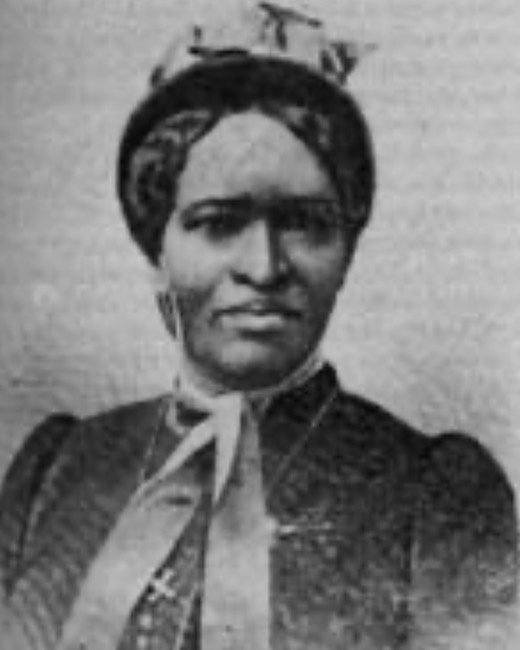
(1847-1911)
Born as a slave in Norfolk, Virginia in 1847 (some date 1851), April Lucy Farrow was the niece of abolitionist Fredrick Douglas. As with many African-Americans who came out of slavery, very little is known of Lucy Farrow’s early life. As a free woman, her story picks up in 1905 as a widow in her mid to late 50’s in Houston, Texas.
While no exact date is given for her arrival to Houston in 1905, Farrow was pastoring a Holiness church of African-American congregants. Much of the foundation of the Pentecostal movement was based in the different Holiness movements that had descended from Wesleyan tradition. In the summer of 1905, at this small mission church, a young minister named William Seymour started attending, marking the beginning of a friendship that would make a global impact.
Divine Encounter
That same Summer, a traveling minister came to Houston to hold a “crusade.” Charles Fox Parham had closed his Bethel Bible College in Topeka, Kansas and was spreading his new Pentecostal message of baptism in the Holy Spirit with the experience of speaking in tongues. Lucy Farrow connected with the crusade and served as a cook for the ministry.
In October 1905, Parham invited Farrow to return with him and his wife to Kansas where she would aid them as the governess of their small children. Farrow took advantage of this opportunity and left her small mission in the able hands of her new congregant and fellow minister, William Seymour. While staying in the Parham home, Lucy Farrow experienced baptism in the Holy Spirit and spoke in tongues. Farrow returned from her two-month sabbatical, bringing her newfound experience with her to her congregation and to her trusted colleague, William Seymour.
Farrow’s Influence Grows
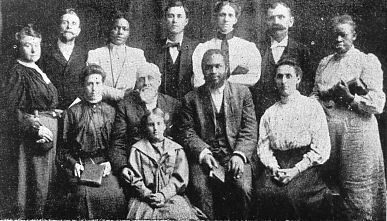
Charles Parham also returned to Houston where he recently had a very fruitful experience in his ministry. After setting up his home in Houston, Parham starts a short-term Bible training school. Farrow had embraced the teachings of Parham and encouraged William Seymour to attend the school.
After just six weeks attending, William Seymour answered the call to move to Los Angeles, California to proclaim the Pentecostal message even though he himself had not experienced the baptism in the Holy Spirit nor spoken in tongues (which was considered a doctrinal essential to early Pentecostals). Seymour arrived in Los Angeles in late February 1906 and preached his first and last sermon at a Holiness church on February 24, 1906. Seymour’s message was offensive to Pastor Juilia Hutchins and the leaders of the church, largely due to the emphasis that Seymour gave on the need to speak in tongues as evidence of baptism in the Spirit. When Seymour returned the following Sunday, March 4th, the doors were padlocked and his message needed to seek a new outlet.
Seymour and a few others were invited to continue the new ministry at the home of Richard and Ruth Asberry at 216 North Bonnie Brae Street in L.A. While many were embracing the teachings of Seymour on the baptism of the Holy Spirit, no one was having the experience Seymour described. Seymour told the congregation about his friend, Lucy Farrow, and they responded by gathering enough funds to buy Farrow a ticket to Los Angeles so she could minister to them.
When Farrow arrived in Los Angeles, she stirred the North Bonnie Brae Street gathering and their hunger for baptism in the Spirit grew. The small group of believers began fasting for a move of the Holy Spirit and on April 6, 1906, William Seymour laid his hands on Edward S. Lee, who was baptized in the Holy Spirit and spoke in tongues. The very next meeting, after Seymour had preached, six others began to speak in tongues, one of which was Jenny Moore, who would become Seymour’s wife.
Soon the news of what was happening spread. Blacks, Latinos, and whites began to gather at the home of the Asberry’s, flowing into the street. Preaching took place from the porch and eventually the porch collapsed and forced Seymour to look for a new place to gather. For $8 a month, Seymour found a dilapidated, former African Methodist Episcopal Church. This humble building at 312 Azusa Street became the epicenter of the Pentecostal movement that would cover the globe.
Beyond Azusa Street
After stirring the congregation of her friend William Seymour and influencing the birth of the Azusa Street Revival, Lucy Farrow remained in Los Angeles for several months. Farrow ministered at the Azusa Street mission, laying hands on many to receive the baptism in the Holy Spirit.
In August 1906, just four months after the birth of the movement, Farrow returned to Virginia to spread the Gospel and the Pentecostal message. While ministering in Portsmouth, Virginia, Farrow saw 200 come to Christ and many of them also experienced baptism in the Holy Spirit and spoke in tongues.
In addition to her ministry in several locations across the United States, Farrow also ministered in England and in Johnsonville, Liberia, carrying the Gospel message and the Pentecostal experience to the continent of Africa.
Eventually Farrow would make her way back to Azusa Street and Houston. In 1911, after contracting tuberculosis, Lucy Farrow passed away. She is buried in the Olivewood Cemetery in Houston, Texas.
Mother of Pentecost
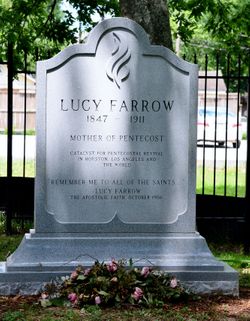
One may argue that the Pentecostal Movement would have happened whether April Lucy Farrow was involved or not. However, God, in his providence, saw fit to destroy barriers by empowering and calling an African-American woman to be a catalyst for the Pentecostal fire that continues to burn bright over a century later. For this reason, Lucy Farrow’s gravestone rightfully reads, “Mother of Pentecost: Catalyst for Pentecostal Revival in Houston, Los Angeles, and the World.”
As a Pentecostal minister, I am forever grateful for this woman’s life. Now in my mid-fifties, she gives me hope that God can use me in mighty ways, no matter my age. She also inspires me to embrace the rich heritage that African Americans have contributed to the roots of my theological foundations.
Lucy Farrow’s Pentecostal influence began in the Fall of 1905 and just six years later she went home to be with Jesus. Though her ministry as a Pentecostal believer was not that long, her impact continues to spread. We, as Pentecostal, Charismatic, and Third-Wave believers owe a debt of gratitude to this woman of God, the Mother of Pentecost.
(For more information on Lucy Farrow and other influential Pentecostal women, see Estrelda Alexander’s newest edition of The Women of Azusa Street.)

